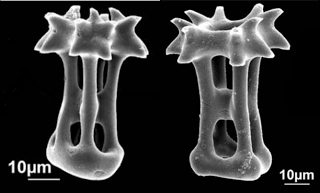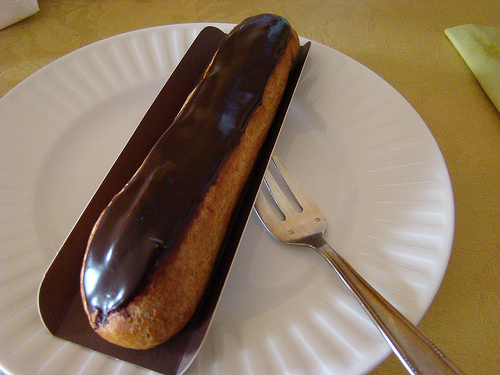Trip to Okinawa #1 – How do you tell species apart?
I just got back from a trip to Okinawa. In the next week, I will report on the reason for my visit and some of the findings.
The island of Okinawa is part of the Ryukyu Islands, an archipelago in southern Japan.
For marine biologists, it is a very interesting place. First, the island is big enough to have lots of different types of habitats. Because many species are really picky about the place they call home, more kinds of habitats means more species are likely to be found. Second, Okinawa is at the northern limit of the Indo-West Pacific, the largest and most diverse marine biogeographic region.
The main goal of my visit was to collect specimens belonging to a species complex of sea cucumbers, and along the way compiling the list of all species of sea cucumbers that inhabit Okinawa.
The species complex I'm studying is called Holothuria edulis. In most areas of the Indo-Pacific, Holothuria edulis is easily identifiable. And for good reasons. It looks like a pink sausage that is burnt on one side. It prefers shallow places (less than 10 m / 30 ft) that are a little silty with few waves. That's why it is usually very common in lagoons and back-reefs. It's active both during the day and at night.
| Holothuria edulis (the pink sausage). Photo by François Michonneau/FLMNH. CC. |
In 2007, Mark O'Loughlin published with some other eminent sea cucumber biologists a new species that they named Holothuria nigralutea. The specimens were collected in Western Australia between 90 and 100 m (300 to 330 ft). At a first glance, it doesn't look very similar to the pink sausage Holothuria edulis. It is almost twice as long, it is light yellow with a series of black blotches on the dorsal side and a black stripe on the ventral side.
| Holothuria nigralutea (the éclair). Dorsal view. Photo by François Michonneau/FLMNH. CC. |
| Holothuria nigralutea (the éclair). Ventral view. Photo by François Michonneau/FLMNH. CC. |
To tell species apart, sea cucumber biologists like to look at ossicles. They are microscopic "bone"-like structures that are found in the skin of sea cucumbers. They can take all kinds of shapes and usually each species of sea cucumber is characterized by a unique set of ossicles. However, the ossicles of Holothuria nigralutea look very similar to the ones of Holothuria edulis.
 |
| Ossicles from Holothuria nigralutea (left) and Holothuria edulis (right). Fron O'Loughlin et al 2007. |
So, last year while in Okinawa, we were very surprised and excited when one of our hosts, Daisuke Uyeno, brought us back 3 specimens of Holothuria nigralutea from his 45 m (145 ft) dive. Not only was it very far away from the location the species was first seen, but it was also much shallower. This considerably changed what we thought we knew about this species.
In Japan, biologists often give common names to species so that they can refer to them easily in Japanese. For Holothuria nigralutea the common name is "ekureanamako" or the éclair sea cucumber. Indeed, the black stripe on the ventral side of this species just looks like the delicious pastry.
 |
| An éclair by CraZeeCrafteeZ, on Flickr. CC. |
After the pink sausage and the éclair, let me introduce you to the third player: the gray one. It likes the clear waters of the fore reefs exposed to waves. It is found usually below 10 m (30 ft) but not much deeper. It is a nocturnal beast. During the day it hides in crevices, but when the sun goes down it mops the reef frenetically (as much as a sea cucumber can be). It is also very easy to recognize: the dorsal side is taupe gray with white speckles while the ventral side is light beige. The gray one is found in some places of the Western Pacific: Micronesia, Cooks Islands, New Caledonia, Nauru and Okinawa. The gray one doesn't have a scientific name. Indeed, there is no physical difference other than the coloration that can tease this species apart from the pink Holothuria edulis.
| The gray one. Photo by François Michonneau/FLMNH. CC. |
To summarize we have three very different looking animals: the pink sausage, the éclair and the gray one. They are very different sizes: about 15 cm (6 in) for the pink one, 30 cm (12 in) for the gray one and 45 cm (18 in) for the éclair. They live in different places: shallow lagoons for the pink, exposed reef slopes for the gray one, and much deeper for the éclair. Yet, their anatomy is very similar and their ossicles are almost identical. So despite their apparent ecological differences, are they all the same species?
In the next post, we'll see what the DNA has to say about it.
Sources & Credits:
- P. Mark O’Loughlin, Gustav Paulay, Didier Vandenspiegel and Yves Samyn (2007). New Holothuria species from Australia (Echinodermata: Holothuroidea: Holothuriidae), with comments on the origin of deep and cool holothuriids. Memoirs of Museum Victoria. 64: 35-52. link | PDF
- All sea cucumber pictures by François Michonneau/FLMNH licensed under Creative Commons Attribution.
- Eclair picture by CraZeeCrafteeZ on Flickr licensed under Creative Commons BY-NC-ND.

Comments